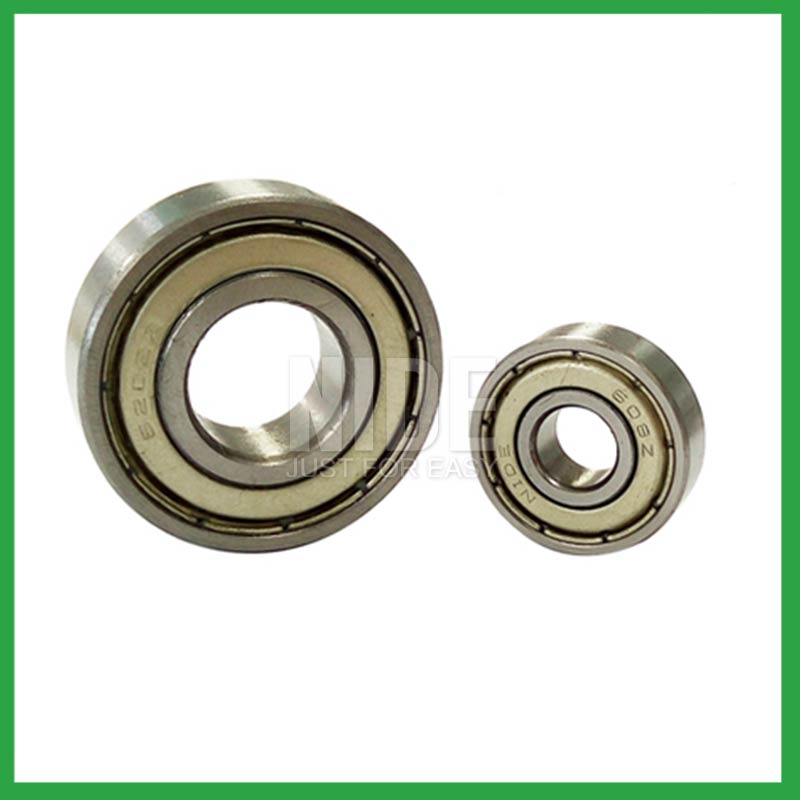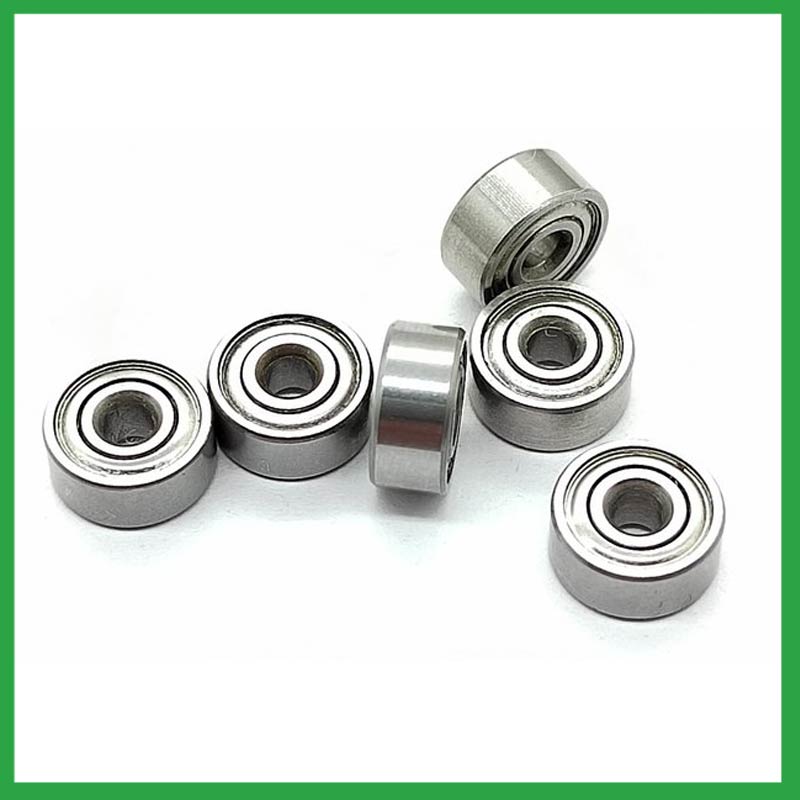PRODUCTS
CONTACT US
Ningbo Nide International Co., Ltd.
一一
· Contact person:Jack Zeng
· Mob/Whatspp/WeChat:0086-13738869026
· Email:emarketing@nide-group.com;marketing4@nide-group.com
· Add:No. 169, Wohushan Road, Daqi Subdistrict, Beilun District, Ningbo, China

Nide team could manufacture ball bearing as per customer’s drawing and samples.
If customer only has samples, we could also design drawing fo r our customer.
We also provide customized service.
Our ball bearing is widely applied the different industrials.
Ningbo Haishu Nide International is located in the beautiful sea shore city--Ningbo, taking the advantage of advanced industries hub, perfect supply chain and convenient transportation, and integrating professional team with rich motor manufacturing experience , we focus on supplying the Motor Components One Stop Sourcing Platform to our customers.
Our products include ball bearing,thermal protector,motor cover and lamination,insulation paper,shaft,commutator,carbon brush,etc.Apart from these products, we also provide the service for the motor manufacturing technical consultant, project support and turn-key project.

| Parameter | Information |
|---|---|
| Product Name | thin ball bearing |
| Brand Name | NIDE |
| Place of Origin | Ningbo,China |
| Material | chrome steel, etc. |
| Structure | Deep Groove |
| Color | Customized Color |
| Delivery Time | 5-7days |
| Port | Ningbo/Shanghai |
| Export region | Oceania,Africa,Asia |
| Export Country | India,Brazil,South Korea,Latvia,Egypt,Luxembourg,Chad...etc |
| Application | chemical equipment, etc. |
| OEM/ODM | Yes |
| Size | Customized size |
| Stock | In Stock |
| Feature | High speed,Simple structure...etc |
| MOQ | 10 pieeces(Specific according to the model) |
| Certification | ISO9001,CE-insulation paper inserting machine,CE-stator coil forming machine,etc |
| Supply Ability | 100000-500000 Piece/Pieces per Month |
| Lubricate | Oil Grease |
| Packaging Details | Suitable for sea transportation |
| Lead time (days) | 15-20 (To be negotiated) |
Please note: The above table data is for reference only. For specific information, please contact us.
The precision range of thin ball bearing is from ABEC7 to ABEC9, with a particle size of 0.3 μ m. Among them, ABEC9's ball bearings have the best precision range and are widely used in the electronics industry, precision measurement industry, and so on.
Before use, the model, size, and design of the ball bearing should be confirmed to ensure suitable application;
During installation, the installation load of the ball bearing should be minimized as much as possible to avoid unnecessary damage;
The bearing shaft and the bearing frame should be stable at the same time to avoid excessive tension.
Ball bearings have many advantages, making them highly competitive in the market.
Firstly, they are very durable and have good wear performance, making their service life longer than many other types of bearings.
Secondly, they are easy to install and can provide low friction performance in various applications.
Thirdly, they require a relatively low level of maintenance, making them cost-effective.
In addition, compared to many other types of bearings, their purchase cost is relatively low, making them an economical choice.




thin ball bearing---FAQs Guide
2.Are there self-aligning thin ball bearing that accommodate misalignment and shaft deflection in rotating equipment?
3.What are the standard sizes and dimensions of thin ball bearing?
4.Can thin ball bearing be used in both vertical and horizontal orientations?
5.What are the common materials used in thin ball bearing manufacturing?
6.Are there thin ball bearing designed for extreme temperature environments, such as cryogenic or furnace applications?
7.Do thin ball bearing come in various tolerance classes?
8.What are the considerations for choosing between open, shielded, or sealed thin ball bearing in specific applications?
9.Are there miniature thin ball bearing designed for use in precision instruments and small-scale mechanisms?
10.As a thin ball bearing manufacturer,How Can We Guarantee Quality?
11.What are the considerations for selecting sealed or shielded thin ball bearing to protect against contamination and retain lubrication?
12.How do thin ball bearing handle radial loads, axial loads, and combined loads, and what are their load-carrying capacities?
1.About thin ball bearing,Will you check the products before shipment?
Yes, We have a professional QC team. Products will be strictly inspection before shipment.
2.Are there self-aligning thin ball bearing that accommodate misalignment and shaft deflection in rotating equipment?
These thin ball bearing are particularly suitable for applications where misalignment can arise from errors in mounting or shaft deflection. A variety of designs are available with cylindrical and taper bores, with seals and adapter sleeves and extended inner rings.

3.What are the standard sizes and dimensions of thin ball bearing?
thin ball bearing size charts are widely available, and can be used to find the measurements of a specific bearing. Series 6200 and 6300 are the most commonly used, and typically range from 10 x 30 x 9 mm (. 394 x 1.181 x . 354 in) to 150 x 320 x 65 mm (5.906 x 12.598 x 2.559 in).
4.Can thin ball bearing be used in both vertical and horizontal orientations?
Sleeve Bearings: Sleeve bearings, also known as plain bearings, employ a simple yet effective mechanism. A cylindrical sleeve separates the rotating shaft from the stationary portion of the bearing, reducing friction and enabling smooth rotation. Sleeve bearings are characterized by their quiet operation, cost-effectiveness, and suitability for horizontal mounting orientations.
Ball Bearings: Ball bearings introduce small metal balls between the moving parts, providing enhanced durability and reduced friction. This design allows for smoother and more efficient rotation, making ball bearings well-suited for high-performance applications and vertical installations.

5.What are the common materials used in thin ball bearing manufacturing?
Most thin ball bearing are made of a type of steel known as high carbon chromium steel, often called chrome steel. This is used for reasons of cost and durability. Bearings are also made from other materials such as stainless steel, ceramics and plastic.
6.Are there thin ball bearing designed for extreme temperature environments, such as cryogenic or furnace applications?
High temperature thin ball bearing use specialized lubricants to stand up to high temperatures. Grease-packed bearings are pre-filled with fluorine grease for high temperatures, while YS and SJ bearings use molybdenum disulfide (MoS2) solid lubricant to withstand temperatures up to 350°C and 400°C respectively.

7.Do thin ball bearing come in various tolerance classes?
Bearing tolerances are standardized by classifying bearings into the following six classes (accuracy in tolerances becomes higher in the order described): 0, 6X, 6, 5, 4 and 2.
8.What are the considerations for choosing between open, shielded, or sealed thin ball bearing in specific applications?
While sealed bearings offer superior protection and maintenance advantages, shielded thin ball bearing can be more suitable in situations where minimal friction and operating temperature are crucial. It's essential to assess the operational environment and demands before making a selection.

9.Are there miniature thin ball bearing designed for use in precision instruments and small-scale mechanisms?
Miniature bearings, despite their small size, play a significant role in various industries and applications. These compact powerhouses, typically measuring less than one inch in outer diameter, offer exceptional precision, durability, and reliability. Miniature bearings find extensive use in precision instruments and robotics.
10.As a thin ball bearing manufacturer,How Can We Guarantee Quality?
Always a Pre-production Sample Before Mass Production;Always Final Inspection Before Shipment.

11.What are the considerations for selecting sealed or shielded thin ball bearing to protect against contamination and retain lubrication?
First, the environment in which your thin ball bearing operate in can help you identify potential contaminants, allowing you to select your shields or seals accordingly. For example, shielded bearings have a gap that can allow finer contaminants or water from washdown applications to enter the bearing and get into the raceways.The challenge for sealing bearings is to seal the bearing by protecting the bearing from contaminants and running efficiencies.
12.How do thin ball bearing handle radial loads, axial loads, and combined loads, and what are their load-carrying capacities?
The type of bearing used also varies between these loads. While deep-groove thin ball bearing are better equipped to handle radial loads, thrust ball bearings are designed for axial loads. However, it's essential to note that most bearings, such as angular contact ball bearings, can handle both radial and axial loads.The Bearing Static Capacity, Co, is the maximum load that can safely be applied to a non-rotating bearing that will not cause subsequent bearing operation to be impaired. It is based on calculated contact stress at the center of the most heavily loaded rolling element where it contacts the Inner Race.


